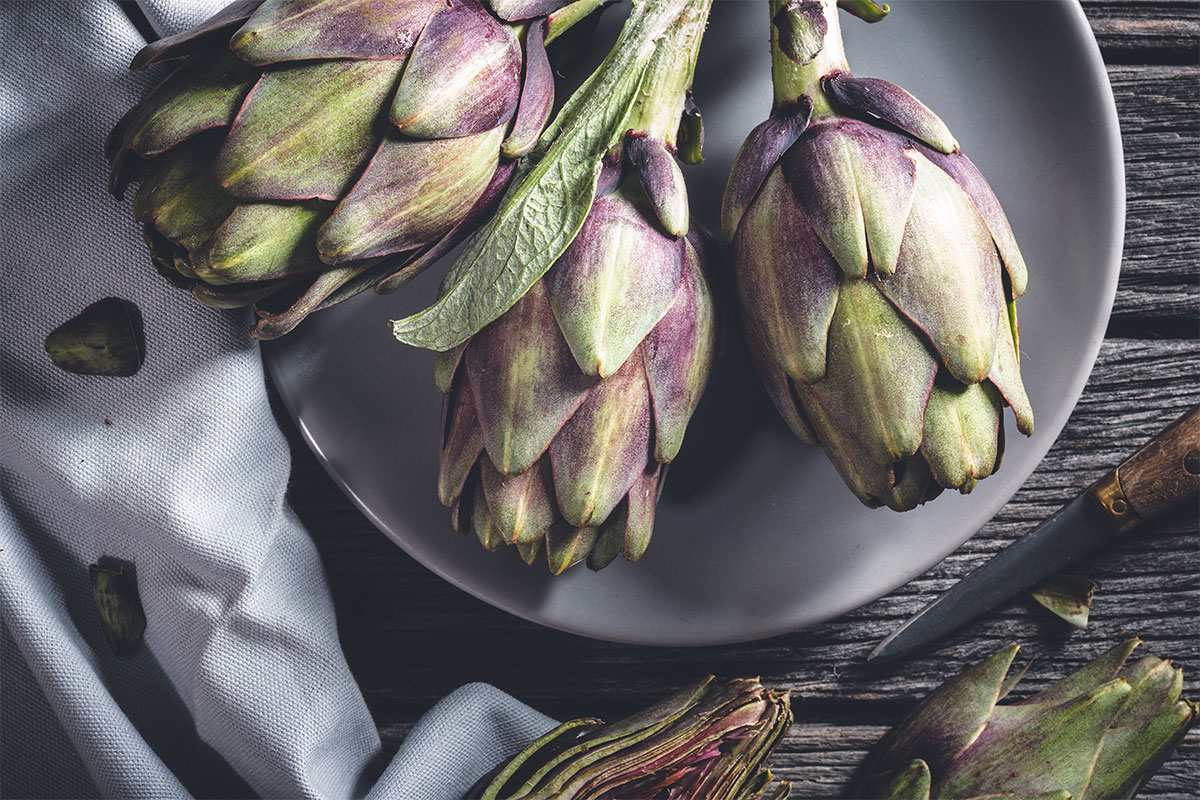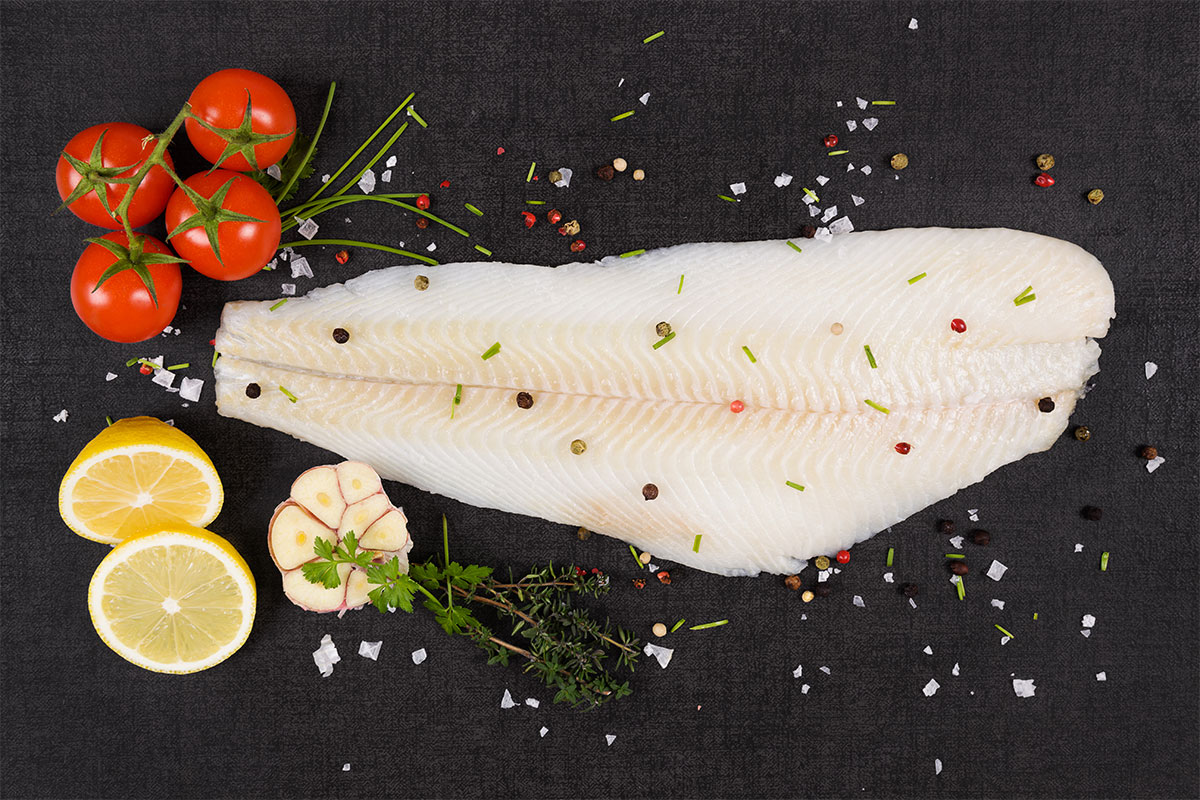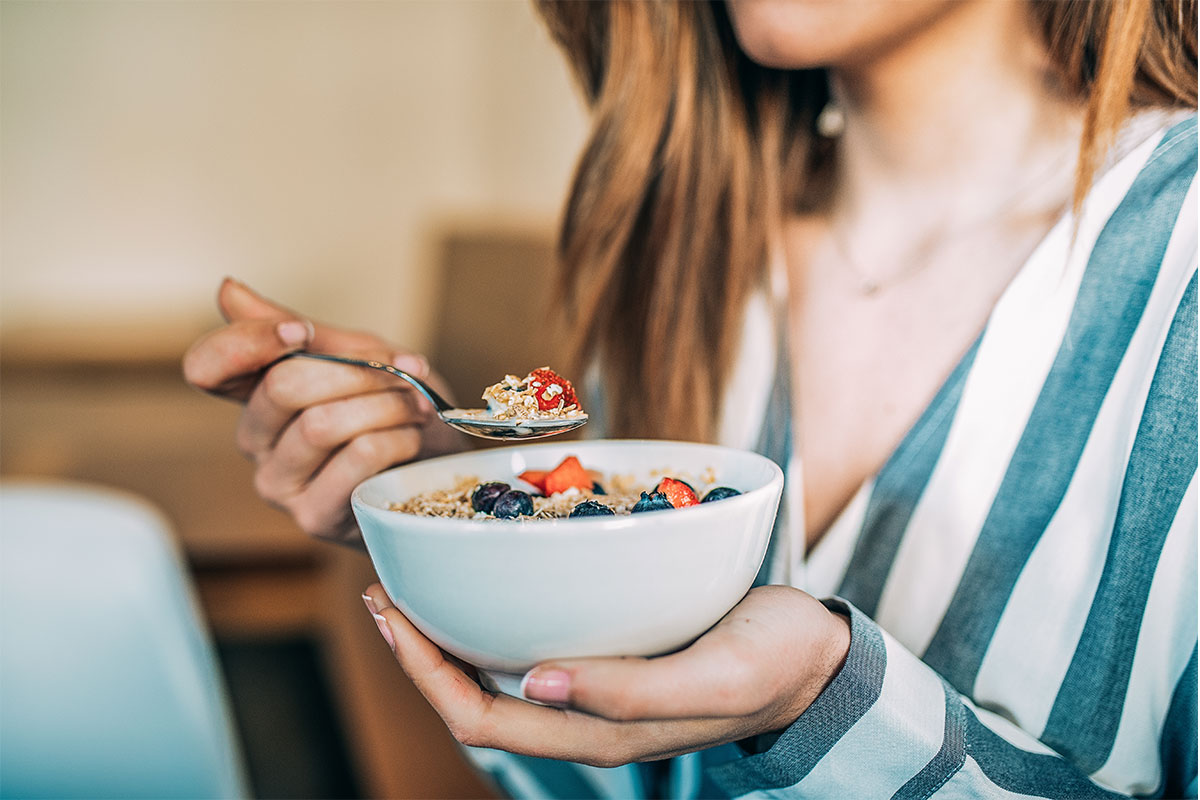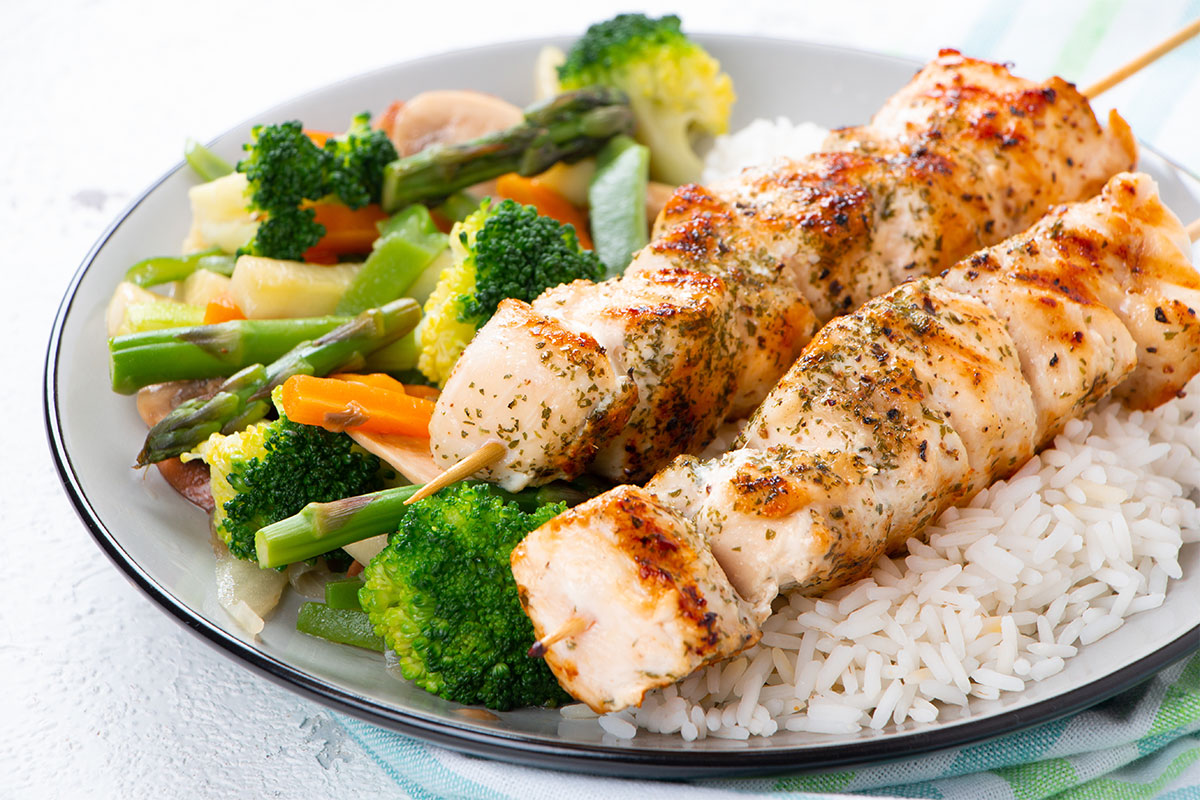Why am I Gaining Weight Despite Diet and Exercise? │ QA
If you’re careful with your nutrition, working out weekly, and still experiencing problems with your weight, take a moment to read this QA.


Is peanut butter a good source of protein (1 tablespoon & 1/2 banana) or just too much fat? What type of cheese has the best protein and least amount of fat? I know I need fat in my diet, but I get that from animal protein and hummus.
– Anne F.

Peanut butter is richer in fat than it is protein by two-fold! It’s comparable to other nut spreads like almond paste, cashew butter and sesame butter. Soynut butter is only slightly higher in protein and lower in fat. A typical 2 tablespoon serving of any is a “good source” of protein, providing at least 10% of a reference daily intake of 60 grams. There are certainly lower-fat proteins (eggs, cottage cheese, extra lean ham, soy sausage) though they don’t spread on a banana.
To answer your second question, cheese is a little better in its protein to fat ratio, with the best regular-fat ones being 2½:1 cottage cheese, 4:3 fresh Parmesan, 1:1 provolone and 1:1 mozzarella. Any cheese made with skim milk will have less fat and reduced and low-fat cheeses are plentiful. I’d recommend avoiding non-fat solid cheeses with their added stabilizers and sodium, not to mention their poor texture.
*nutrient values per USDA National Nutrient Database for Standard Reference Legacy Release, April 2018
– Debbie J., MS, RD
This article should not replace any exercise program or restrictions, any dietary supplements or restrictions, or any other medical recommendations from your primary care physician. Before starting any exercise program or diet, make sure it is approved by your doctor.
Some questions have been edited for length and/or clarity.
 Have a nutrition question? Our registered dietitian is ready to help!
Have a nutrition question? Our registered dietitian is ready to help!
Email nutrition@lafitness.com or submit your question below and it may be featured in an upcoming article!
If you’re careful with your nutrition, working out weekly, and still experiencing problems with your weight, take a moment to read this QA.
Blood sugar control isn’t easy. These are Debbie’s top recommendations for how to address weight control with Type II Diabetes.
Does Intermittent Fasting give you enough time to pack the day's protein? Our registered dietitian helps clear up the confusion!


I am a low-carb vegetarian. What should I eat before and after workouts?
– JC Thomas Jr.

I can see why you reached out, JC! At first glance, there’s certainly a conflict between low-carb and plant-based eating. For vegans, the reliance for protein is heavily on carbohydrate-rich beans. But since you limit carbohydrates it gets trickier to meet protein needs. Depending on the amount of carbohydrate you allow, you should be able to work in legumes daily, though not necessarily for pre/post workout. There are more protein options from seafood and dairy if you perhaps are pescatarian, lacto-vegetarian or ovo-vegetarian.
What are vegetarian things I can eat that contain a lot of protein?
Anything that is suitable for mealtime can be incorporated into pre-workout or recovery snacks. Surrounding your workouts, I’d say to opt for starch or vegetables with accompanying nuts or seeds, and to sacrifice fruit carbohydrate. You can incorporate vegan protein supplements at these times as well. To keep calories up, you need more volume/portions and should incorporate fats throughout the rest of the day.
Here’s a list of some vegetarian foods with limited carbohydrate (<5 grams per serving) *:
and vegetarian foods with very low carbohydrate (<2 grams per serving) *:
*per USDA National Nutrient Database for Standard Reference Legacy Release, April 2018.
– Debbie J., MS, RD
This article should not replace any exercise program or restrictions, any dietary supplements or restrictions, or any other medical recommendations from your primary care physician. Before starting any exercise program or diet, make sure it is approved by your doctor.
Some questions have been edited for length and/or clarity.
 Have a nutrition question? Our registered dietitian is ready to help!
Have a nutrition question? Our registered dietitian is ready to help!
Email nutrition@lafitness.com or submit your question below and it may be featured in an upcoming article!
If you’re careful with your nutrition, working out weekly, and still experiencing problems with your weight, take a moment to read this QA.
Blood sugar control isn’t easy. These are Debbie’s top recommendations for how to address weight control with Type II Diabetes.
Does Intermittent Fasting give you enough time to pack the day's protein? Our registered dietitian helps clear up the confusion!


I currently weigh 270 lbs. and I’m looking to lose at least 70 lbs. I’m trying to lose at least 5 lbs. per week. What should I eat and how much?
– Niesha G.

Your specific diet for rapid weight loss would need to be developed one-on-one with a dietitian, preferably in conjunction with a medical professional. I can say that we’ve addressed similar requests in the past – and the answer is different for each unique person.
Though it’s certainly plausible the scale could drop 5 pounds each of the first few weeks, it’s likely most of that weight would be water loss. Unless you are burning an extra 2,000 calories (a week’s worth of exercise!) daily there wouldn’t be an energy deficit great enough to promote fat burning to that extent.
So… I’d say to focus on your first 10-15-pound reduction by reducing portions, eliminating fried foods, alcohol, and sweets. For structure, you could follow a moderate diet plan providing no fewer than 1,500 calories a day. Whether it’s Mediterranean style, lower carbohydrate, high fiber or 6 mini-meals, adhering to a regimen for a couple of months forces you to plan, shop and prepare for everything you eat.
Here’s just one sample 1,500 calorie day of familiar American foods to get your started*:
Analysis on www.FitDay.com by a Registered Dietitian Nutritionist = 28% Protein, 28% Fat, 44% Carbohydrate, 25 gm Fiber * Findings were used along with RDN’s professional judgment.
– Debbie J., MS, RD
This article should not replace any exercise program or restrictions, any dietary supplements or restrictions, or any other medical recommendations from your primary care physician. Before starting any exercise program or diet, make sure it is approved by your doctor.
Some questions have been edited for length and/or clarity.
 Have a nutrition question? Our registered dietitian is ready to help!
Have a nutrition question? Our registered dietitian is ready to help!
Email nutrition@lafitness.com or submit your question below and it may be featured in an upcoming article!
If you’re careful with your nutrition, working out weekly, and still experiencing problems with your weight, take a moment to read this QA.
Blood sugar control isn’t easy. These are Debbie’s top recommendations for how to address weight control with Type II Diabetes.
Does Intermittent Fasting give you enough time to pack the day's protein? Our registered dietitian helps clear up the confusion!


I am trying to lose 10 pounds. What would you suggest eating every day for breakfast and dinner? I have tried multiple things like oatmeal, rice, and chicken, etc. I think my problem is that I eat too many calories during the day.
– Aubrey H.

You’re requesting suggested breakfasts and dinners to eat repeatedly day-in and day-out, though your stated problem seems to be you eat too much during the day. If your schedule and environment don’t allow you to plan or prepare for a balanced lunch or to prevent mindless snacking, that is something you need to address! Controlling the start and conclusion of your day makes sense for now. I always recommend a variety of foods for the most optimal nutrition as only one combination won’t provide all the nutrients required on limited calories.
That said, oats are a great beginning and offer a myriad of ways to be served – just think of the toppings! They can be served spiced with cinnamon and apples or nutty with chia seeds, honey, and sliced almonds. Oats are filling and may help you desire less food later. Choose a heartier steel cut or stone-ground oats for more whole grain fiber.
Chicken is a good choice to base your dinner around as well. It can easily be incorporated into pasta primavera, fajitas, or stir-frys. Almost every way beef, pork or fish can be served, chicken can take a similar form. Thoughts of barbequed chicken, baked homemade breaded tenders, and grilled skewered chunks come to mind. There are probably chicken recipes to last you all year without repeating!
Balancing the rest of your breakfast and dinner with other meal components (food groups) is essential for health. It’s important to remember that no matter what you choose, portions matter. If your appetite is not a reliable guide, try drinking more water before meals.
– Debbie J., MS, RD
This article should not replace any exercise program or restrictions, any dietary supplements or restrictions, or any other medical recommendations from your primary care physician. Before starting any exercise program or diet, make sure it is approved by your doctor.
Some questions have been edited for length and/or clarity.
 Have a nutrition question? Our registered dietitian is ready to help!
Have a nutrition question? Our registered dietitian is ready to help!
Email nutrition@lafitness.com or submit your question below and it may be featured in an upcoming article!
If you’re careful with your nutrition, working out weekly, and still experiencing problems with your weight, take a moment to read this QA.
Blood sugar control isn’t easy. These are Debbie’s top recommendations for how to address weight control with Type II Diabetes.
Does Intermittent Fasting give you enough time to pack the day's protein? Our registered dietitian helps clear up the confusion!


I need help with my carbs, please. I only allow 45 gm of carbs at each meal.
– Laura B.

You are in company with other people who may need to count carbohydrates, often for blood sugar management. The focus would be on low glycemic choices. For a limit of 45 grams carbohydrate per meal you could roughly plan on 25 gm from grain/starch, 10 gm from fruit or milk, and 10 gm from non-starchy vegetables. Remember that use of certain condiments will necessitate corresponding reduction from your food total.
Here’s one example providing approx. 45 gm carbohydrate meals:
Analysis on www.FitDay.com by a Registered Dietitian Nutritionist = 135 gm total carbohydrate (42 breakfast, 47 lunch, 42 dinner) in 1850 calories. Findings were used along with RDN’s professional judgment.
– Debbie J., MS, RD
This article should not replace any exercise program or restrictions, any dietary supplements or restrictions, or any other medical recommendations from your primary care physician. Before starting any exercise program or diet, make sure it is approved by your doctor.
Some questions have been edited for length and/or clarity.
 Have a nutrition question? Our registered dietitian is ready to help!
Have a nutrition question? Our registered dietitian is ready to help!
Email nutrition@lafitness.com or submit your question below and it may be featured in an upcoming article!
If you’re careful with your nutrition, working out weekly, and still experiencing problems with your weight, take a moment to read this QA.
Blood sugar control isn’t easy. These are Debbie’s top recommendations for how to address weight control with Type II Diabetes.
Does Intermittent Fasting give you enough time to pack the day's protein? Our registered dietitian helps clear up the confusion!
Be the first to know about exclusive
content, deals and promotions